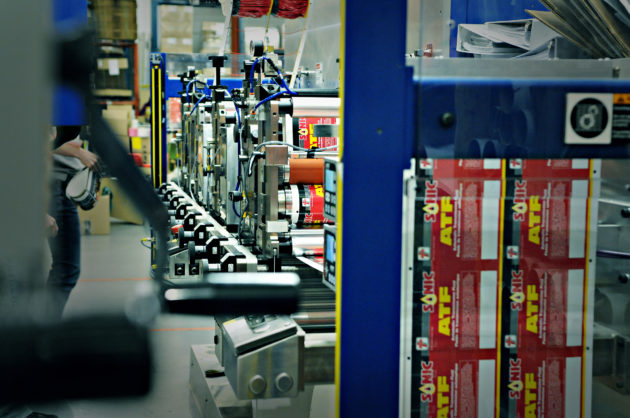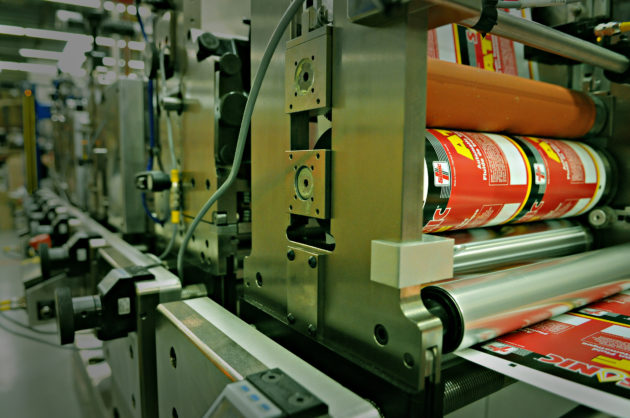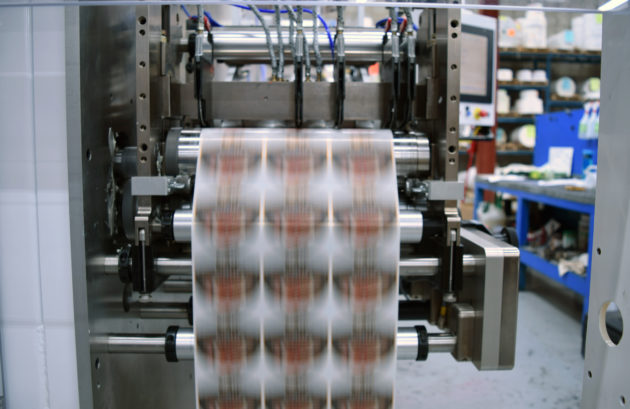
Would a (slight) labelling change do you good?
By Darrell Friesen, President & CEO of Jet Label & Packaging Ltd.
Packaging Food In Canada Regulation Jet Label & Packaging Ltd. labellingJet Label president and chief executive officer Darrell Friesen provides a reason to refresh rather than rebrand via labelling options.

Like any marketing tool, a time comes when updates or adjustments must be made to labels in order to revitalize brand potency and enhance the impact it has on consumers. These changes can help labels reflect customer trends and evolving industry needs. Technological advances create further opportunities – and with it demand – for enhancements to labelling materials and design elements.
Undergoing a complete brand overhaul can be complicated, expensive and risky. Chief among potential rebranding pitfalls is a “culture shock” erosion of customer loyalty. If too extreme a change on label appearance is employed too rapidly, fewer customers may recognize or identify with their favourite brands or products, resulting in diminished sales.
So before a drastic rebrand, consider a milder refresh.

Any manufacturer considering labelling changes must consider both sides of shelf impact – both good and bad. Though a differentiated product will, in theory, stand out among competitors and yield greater sales success, straying too far from an established brand risks alienating certain customers. There’s a grey area between creating a more visually appealing façade for products on shelves and, taken too far, abandoning its identity for no good reason.
Choosing a smaller-scale brand refresh over a total brand transformation can effectively toe this line without crossing it. Before giving your labels a facelift, try a gentler makeover. After all, while a change can do you good, change merely for change’s sake can be counterproductive. Choosing the right option between a total rebrand and a lower-key refresh is crucial to a company’s marketing direction and, most importantly, its bottom line.
Pain can be a highly motivating change agent. Not surprisingly, a prominent reason customers seek labeling changes is sluggish sales performance. Refreshing the outward appearance, enhancing the material quality of labels and providing a modern update to a familiar label can grab consumers’ eyes and help recover lost market share. A slight modification of label appearance can be the ticket to increased sales without confusing loyal customers’ abilities to identify brands.
Legal implications also have an influence on the demand for brand refreshes. Most notably, adjustments to food nutrition labels are scheduled in both the United States (2020) and Canada (2021), mandating food manufacturers adhere to a multitude of new requirements. Though an ambitious undertaking in itself, the new rules provide an opportunity to synchronize other aspects of a brand refresh in regards to label changes. Viewing this mandate and other requirements as an opportunity rather than a hindrance can revitalize brand recognition while complying with legal directives all in one unified effort.
The customers are always right… and always evolving in their point of purchase decision-making process. Your labels are among your brand’s best chances to espouse benefits that align with your target audience’s values. Most prominently, increased eco-consciousness has driven the incorporation of eco-friendly/sustainable materials in labelling applications. Meanwhile, growing emphasis on nutrition and health have prompted food product providers to showcase distinctions such as “Gluten-Free” and “Vegan Friendly.”
Still, there is usually little reason to blow up the brand and start from scratch. Minor modifications in a label’s design can allow for more space to denote various trends-of-the-times attributes, modernizing a look while more effectively appealing to current consumers. Eye-catching options like transparent knockout panels require some differentiation in package design, but still present an easier alternative than a total brand redo. Understanding and implementing trends in consumer marketing is a useful strategy in refreshing your brand and simultaneously appealing to customers as their purchasing habits evolve.
The steady march of technological advances also has profound influence on demands for brand updates. As new capabilities emerge, more options for brand impact are available.
Most notably, of course, advances in digital printing continue to offer broader labeling design options and, through them, brand identity and marketing tactics. Connecting with customers on a personal level through print has never been so easy thanks to technology. Using variable printing, for example, a customer can purchase a beverage with his or her favourite quote, joke or image on it. A label can even become a completely unique piece of abstract art. Additionally, advances in technological capabilities can result in products’ greater impact while maintaining cost effectiveness. For example, the ability to print 16 colours on food packaging labels ensures a bigger bang for your buck, both in regard to customer appeal and increased marketing capabilities.
But remember: technology is a tool, not a strategy in and of itself. Use technology as a means to improve your label design rather than replace the established brand itself. Technology is wonderful, but not worth cashing in the whole of your accrued brand capital.

Let’s explore a few examples of successful brand refreshes – as opposed to total rebrands.
- A Canadian specialty foods company had the same label for over a decade and wanted to update its labels. The changes were far-reaching – but not too far-reaching. The company altered its logo, colours and label material, but kept key design elements from its legacy logo to avoid throwing customers off. This provided a balanced blend of modernity and continuity in their products’ look so that customers could still find its product on busy store shelves and, once identified, be assured that the product itself had not changed.
- A meat processing company had the same label since the 1970s. When considering a change, they decided it was literally better to work around the edges than start from scratch. While comparing their labels to the competitors’, they noticed a similarity: all the labels had the same shape as one another. They decided to incorporate a custom die that helped the brand stand out from competitors while retaining valuable brand consistency.
- A specialty meats company wanted to update its look and to help its product stand out amongst competitors. The decision was made to hire a photographer to showcase the company’s actual product on labels instead of stock photos. The photo, as a main focus on the label, could be swapped out to update the look of the label at any time while maintaining brand consistency – a flexible, instantly updatable approach.
- A nod to the burgeoning peanut-free school movement, a Canadian manufacturer of packaged, ready-to-eat foods updated its labels with a button clearly stating “PEANUT FREE.” Even though the product was always peanut-free, parents could now trust this brand above competitors – as the subsequent sales surge reflected.
- Similarly, when gluten-free became a household term, many companies added “GLUTEN FREE” to their packaging, or enhanced or enlarged existing designatory language. Many of these products were already naturally gluten-free, but shoppers migrated toward products with clear “gluten-free” signage due to the peace of mind it provided.
Factors contributing to the need for such tweaks vary on a company’s circumstances and goals, but broadly speaking a brand refresh is a viable way to accurately shift or modernize a brand’s identity without blowing out marketing budgets or disrupting customer loyalty, thereby updating an image without sacrificing – and ideally bolstering – sales.
Understanding these motivations is crucial in determining whether companies would better benefit from a true rebrand or just a brand refresh. If the obstacles and goals of a company align with the aforementioned points, most likely a brand refresh in the form of a label modification is a valid solution.
The continually evolving landscape of the printing and labelling industries provide considerable room for growth at the hands of a brand refresh. The hassle and expense of a complete company rebrand is overshadowed by the simplicity and tactfulness of a brand refresh, benefitting both company recognition and customer satisfaction. The results can be higher sales, heightened consumer awareness and increased brand visibility.
 Darrell Friesen is president and chief executive officer of Jet Label & Packaging Ltd. With manufacturing facilities in Edmonton and Vancouver, Jet Label produces labels and printed tape efficiently and cost-effectively for a diverse portfolio of customers, including grocery stores such as Safeway and Sobeys. www.jet-label.com.
Darrell Friesen is president and chief executive officer of Jet Label & Packaging Ltd. With manufacturing facilities in Edmonton and Vancouver, Jet Label produces labels and printed tape efficiently and cost-effectively for a diverse portfolio of customers, including grocery stores such as Safeway and Sobeys. www.jet-label.com.Print this page